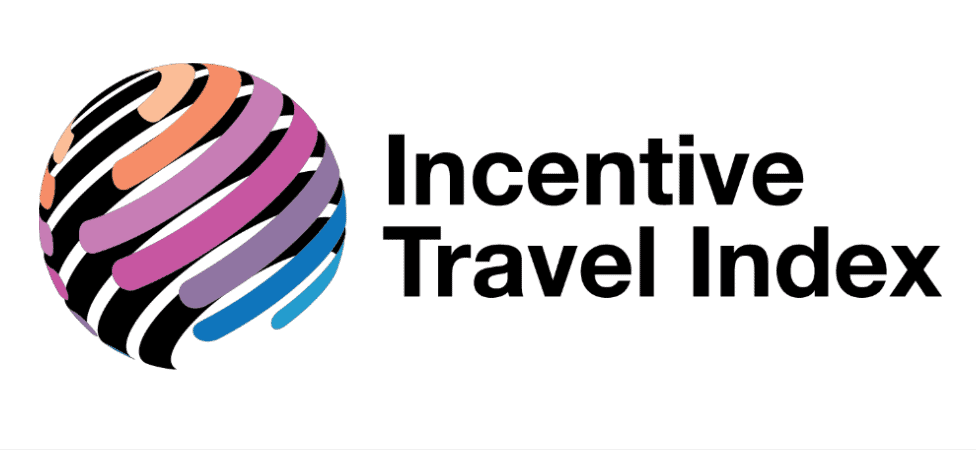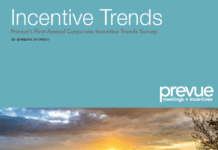 Incentive travel is expected to continue growing in terms of both number of activities and spend per person. But the focus is shifting as the workforce evolves and costs continue to rise.
Incentive travel is expected to continue growing in terms of both number of activities and spend per person. But the focus is shifting as the workforce evolves and costs continue to rise.
Incentive travel activity and spend per person are expected to continue to rise through 2025, with the largest gains expected for the pharmaceutical and healthcare industry, technology and automotive sectors, according to the newly released 2023 Incentive Travel Index (ITI). The primary industries for incentive travel programs, however, are slightly different, with the financial and insurance sector continuing to take the top ranking, followed by technology and then pharma/healthcare.
While the expected rise in costs is, well, to be expected given the still-rising inflation rates — which were cited by more than three-quarters as a major future challenge — the anticipated rise in the number of activities and participants may be rooted in another finding. Respondents overwhelmingly agreed that the purpose is shifting from “hard power” benefits, such as increasing sales and market share, to more “soft power” benefits such as reinforcing corporate culture, engagement and relationships. This isn’t to say that hard power benefits aren’t still important — they are, especially for North American and European respondents. More than three-quarters said incentive travel will always excel at motivating individual performance.
That said, 58% of the total respondents say those soft power benefits are becoming increasingly important focuses, compared to 49% who say the same for traditional hard power benefits. Knowledge transfer, such as training and brand compliance, is only a growth area for 38%, the survey found. In fact, for Western Europe, North America and the “rest of the world” category, soft power benefits are what buyers say as increasing in importance, at 74%, 63% and 64%, respectively.
This makes sense in the context of the overarching corporate trend of having difficulty attracting and retaining talent, cited by 55% as a major challenge. In fact, retention of employees was cited by 90% as a main reason why travel incentives are gaining in strategic importance, along with its intrinsic value as a reward. With so many companies dealing with a dispersed workforce, this also is a key tool for building engagement and company culture, said 81%, while 79% said this type of incentive fulfills the need to bring together a more dispersed workforce. In fact, more than two-thirds agreed that incentive travel is a key part of future workforce strategy, and that the social prestige of incentive travel has only grown in recent years.
Other key findings from the study:
- Senior management is starting to understand the value of incentive travel programs. More than half said their senior leadership view incentive travel as a “need to have” and 37% are highly engaged in planning.
- Most anticipate spend per person to continue to rise. While 43% said they expected to see per-person spend rise, 59% say the same for 2024, and 64% say per-person costs will be up even more in 2025. The largest budget allocations are for hotels (25%), followed by airfare (22%), food and beverage (18%), and activities (13%).
- Seeking destinations closer to home but still new and exciting. While 41% said they plan to find incentive travel destinations a shorter distance away, 71% said they were looking for new destinations they hadn’t used in the past. All-inclusive resorts also are growing in popularity for 53% of respondents.
- Safety and costs are key for destination decisions. Seventy-two percent said it was important that the destination be perceived as safe when it comes to crime and threats, 58% also said the destination also should be considered safe from a health perspective. Seventy-one percent cited costs as a major determinant. However, political considerations will override other destination considerations, said 51%.
- Activities are important. Among the activities respondents noted as key to their travel incentive programs were group cultural sightseeing experiences (60%), relationship-building activities (58%), group dining experiences (57%) and luxury travel/”bucket list” experiences (53%).
- Artificial intelligence (AI) not seen as a major disruptor for incentive travel. Just 31% said they were concerned that ChatGPT or other AI tools will significantly disrupt incentive travel marketing and communications.
The 2023 ITI, a joint initiative of the Incentive Research Foundation (IRF) and the Foundation of the Society for Incentive Travel Excellence (SITE), in partnership with Oxford Economics, is the fifth iteration of the study, which this year included incentive travel end-users and incentive travel agency buyers across 19 industries (38% of the total respondents), as well as destination management companies (DMCs); hotel, cruise line, venue and other suppliers; and destination marketing organizations (DMOs), which constituted 62% of respondents. The surveys were completed from May to July 2023.
You May Also Be Interested In…
Incentive Travel Forecast: Strong Demand, Strong Concerns
Cultural Immersion: The New Normal for Incentives
TikTok List Points to Top Incentive Travel Spots










